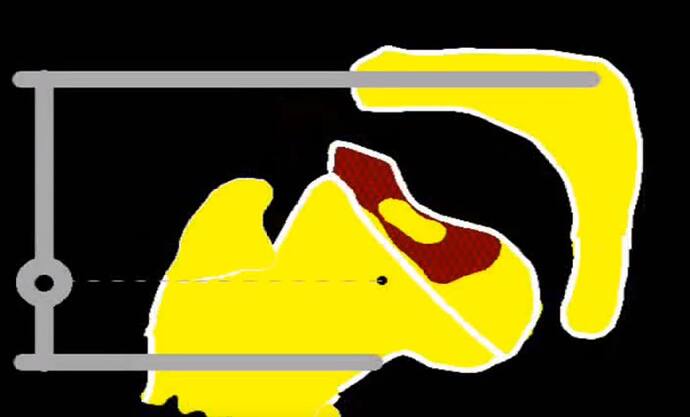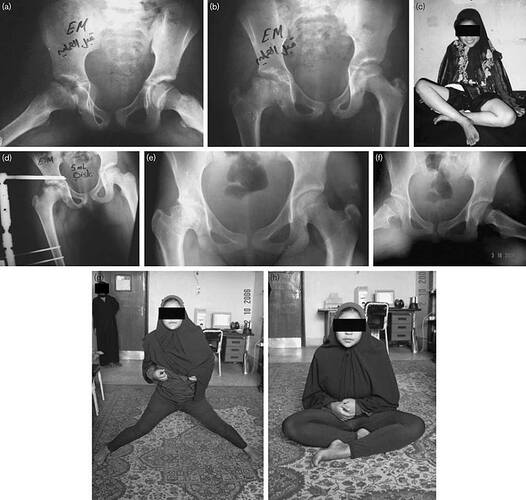Hinged distraction in Legg-Calve-Perthes (coxa plana): with video demonstration
Legg-Calve-Perthes’ disease is characterized by idiopathic aseptic avascular osteonecrosis of the capital femoral epiphysis . The age of diagnosis of this disease is usually 4 to 12 years, with an average of 6 years. The course and prognosis of Perthes’ disease are difficult to predict. The prognosis of the disease depends on bone age at presentation, the sphericity of femoral head and congruency at skeletal maturity, height of the lateral pillar of the capital epiphysis at the presentation, and range of motion of hip joint . Many patients present in a later stage of disease when there is already hinge abduction or poor range of movements of hip. At worst, this condition can lead to degenerative osteoarthritis during early adulthood in about half of these patients. Late onset Perthes’ disease is defined as a disorder that develops after the age of 8 years . This group constitutes about 20% of cases and is known for its aggressive course and poor outcome with chronic hip pain and stiffness . It is widely accepted that those most at risk of a poor outcome are who develop the disease late . The possible explanations to this fact are that acetabulum is unable to accommodate the congruity of deformed femoral head due to decreased elasticity of acetabulum and possibly these children have less time remaining for growth and remodeling of head of femur . The way to treat late onset Perthes’ disease is widely controversial. The main principles of treatment have traditionally been the relief of loading and containment of head of femur . The various surgical treatment options have been proposed for this late onset disease but they have some inherent drawbacks.The obstacles to success
were patient age, loss of motion or contracture, prolonged
healing process, and increased joint pressures that were
subjected to malposition and contracted hip joint.
Therefore, the treatment strategies include maintenance
of hip motion, femoral head containment, acceleration of epiphyseal healing, and minimization of joint pressure
(unloading). Thus, achievement and maintenance of hip
ROM is the only principle of treatment universally agreed
upon . The femoral head must be contained and molded into a sphere by the acetabulum. In addition, the containment requires motion and extrusion must be prevented. Containment treatment in patients older than 11 years of age leads to only 40% satisfactory results.The varus realignment femoral osteotomy may even increase the incongruity of hip as well as shortening of the limb . The valgus femoral osteotomy may succeed in unloading the deformed head, but it may increase the lateral subluxation of head of femur. Either of these procedures does not influence the basic avascular process of head of femur. The acetabular lateral shelf procedure , Salter osteotomy , Chiari osteotomy , and triple osteotomy are aimed at reorienting or increasing size of acetabulum and at producing more support to head of femur. However, these approaches neither reduce the pressure on the head of femur nor change the shape of the femoral head. No traditional treatment modality has shown any statistically significant efficacy in improving the outcome of Perthes’ disease.
The hip distraction with or without soft tissue release by either hinged monolateral external fixator or Ilizarov is a relatively newer modality of treatment of late onset Perthes’ disease. The concept of this modality of treatment is that, by creating the gap in the joint and thus decreasing the stress on the articulating surface and by maintaining some of the movements of the joint, the synovial circulation will improve. This will in fact encourage the fibrous repair of defects of the articular cartilage and further encourage the preservation of relatively intact and the congruent head of femur
.
Guamiero et al. studied 36 children with Perthes’ disease, in which eighteen were treated with femoral varus osteotomy and the rest by arthrodiastasis of hip by an external fixator. They observed satisfactory results in both groups, but the remodeling occurred faster in cases treated by arthrodiastasis. Moreover, Maxwell et al. carried out a prospective trial in boys over the age of 8 years and girls over 7 years at the time of the onset of symptoms and found this modality as an effective method in preventing further femoral collapse. Amer and Khanfour treated 30 patients by hip distraction using minimal soft tissue release and a simple Ilizarov construct. After an average follow-up of 3.6 years, they observed an improvement in the range of movements, pain, and superior and lateral subluxation of head, with a statistically significant difference between pre- and postoperative values. Hosny et al. treated 29 children (older than 8 years at onset) with Perthes’ disease (lateral pillar type C or B). They observed improvement in range of movements of hip in about 93% of patients. They concluded that hip distraction without soft tissue release seems to be a valid treatment option in cases with Perthes’ disease compared to the conventional treatment. Laklouk and Hosny managed 53 patients with Perthes’ disease with a combination of soft tissue release and joint distraction with external fixator. Out of these, 32 were treated by hinged monolateral external fixator and the rest by Ilizarov external fixator. Further, they evaluated 19 of these patients, who attained skeletal maturity, and observed that this method not only improves range of movements but also reduces the superior and lateral subluxation and provides a better radiographic sphericity of the femoral head. Moreover, they recommended that this method can be used when other methods of treatment are contraindicated. Singh et al:2014 study showed improvement in the range of movements by arthrodiastasis of the hip and it was found to inhibit the further epiphyseal collapse in the treated patients

